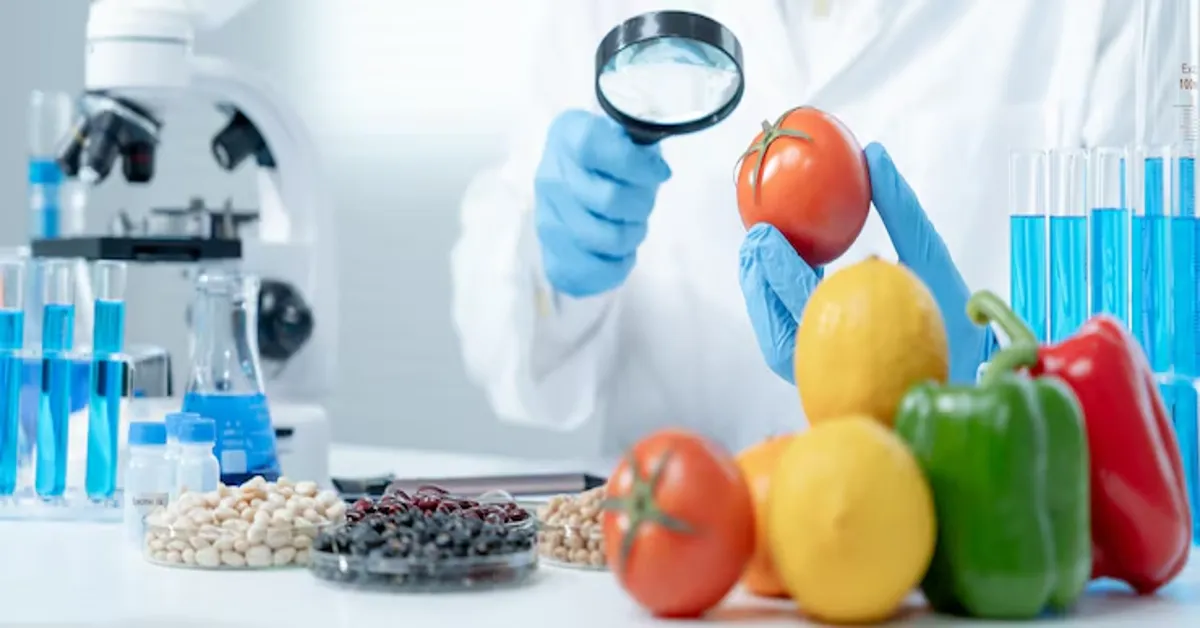In the world of food additives, few are as quietly influential—and quietly controversial—as E622, also known as monopotassium glutamate. It’s a substance tucked into ingredient lists across processed foods, yet rarely understood by consumers. If you’re searching to understand what E622 actually is, how it affects your body, and whether it belongs in your pantry, you’re not alone. In the following article, we’ll explore the science, applications, and implications of E622 in a manner that’s both transparent and thorough—arming you with essential knowledge to make informed decisions about the food you eat.
What is E622?
E622, or monopotassium glutamate, is a flavor enhancer used in a range of packaged and processed foods. It is the potassium salt of glutamic acid, a naturally occurring amino acid found in many protein-rich foods like tomatoes, cheese, and meat. Functionally, it is a cousin of monosodium glutamate (MSG or E621), widely known in culinary and nutrition circles for its umami-boosting properties.
E622 is used for the same reason: to enhance savory flavors without adding saltiness. But its defining feature is the substitution of potassium instead of sodium, making it particularly valuable in low-sodium or sodium-restricted diets. While E621 may have dominated headlines and public concern for decades, E-622 has quietly served a niche market, mostly in health-focused or international food products.
Chemical Composition and Properties
| Property | Description |
|---|---|
| Chemical Name | Monopotassium Glutamate |
| E Number | E622 |
| Molecular Formula | C5H8KNO4 |
| Appearance | White crystalline powder |
| Solubility | Soluble in water |
| Taste Profile | Umami (savory) |
| Derived From | Fermentation of carbohydrate sources |
Chemically, E622 operates similarly to MSG. It dissociates in solution to release free glutamate ions, which then stimulate specific glutamate receptors on the tongue—triggering the savory, mouth-filling taste we associate with umami. The presence of potassium, rather than sodium, makes E622 suitable for potassium-rich diets and those looking to manage hypertension or cardiovascular risks.
Where is E622 Found?
Though not as ubiquitous as MSG, E622 can still be found in:
- Low-sodium soups and broths
- Instant noodles labeled “low salt” or “heart healthy”
- Packaged vegetarian meals
- Flavored rice and grain mixes
- Snack foods marketed to health-conscious consumers
- Meat substitutes or plant-based burgers
It is more likely to appear in foods marketed for specific dietary needs, such as those for individuals with high blood pressure, renal conditions, or those on diuretic medications, where sodium intake must be minimized.
Why Do Manufacturers Use E622?
Food producers choose E622 for several compelling reasons:
- Flavor Enhancement Without Sodium
Sodium reduction has become a major public health goal. E-622 allows manufacturers to preserve taste without relying on sodium chloride or traditional MSG. - Consumer Preference Trends
As consumers become more label-conscious, they may avoid MSG but accept alternatives like E622, which carry a different chemical profile and are often perceived as safer (though the science doesn’t necessarily support that dichotomy). - Formulation Flexibility
E622 can be used synergistically with other flavor enhancers and is especially useful in plant-based food systems where natural umami components may be lacking. - Cost Efficiency
In bulk production, E-622 provides a low-cost solution for flavor enhancement that doesn’t require additional costly ingredients like cheese, meat, or fermentation-derived flavorings.
Safety Profile: Is E622 Safe to Consume?
The short answer: Yes, within regulated limits.
Like other glutamates, E622 has undergone safety assessments by multiple global food safety authorities. It is generally recognized as safe (GRAS) by the U.S. Food and Drug Administration (FDA) and has been reviewed by the European Food Safety Authority (EFSA) as part of the broader glutamate family.
However, its safety comes with contextual considerations:
- Hyperkalemia Risk: Since E-622 provides potassium, individuals with kidney disorders or those on potassium-sparing medications should be cautious. Overconsumption could lead to elevated blood potassium levels, potentially causing heart rhythm issues.
- “Chinese Restaurant Syndrome” Mythology: Though historically MSG (and by extension, glutamates like E622) were blamed for causing headaches and nausea, double-blind studies have not conclusively proven a causal link. The condition is now largely considered anecdotal or psychosomatic.
- Infant and Pediatric Exposure: While no direct harm has been linked, some regulatory agencies recommend limiting use in baby foods due to developing neurological systems and potential over-sensitivity.
How E622 Differs from MSG
While often lumped together, MSG (E621) and E622 have key differences:
| Property | MSG (E621) | E622 |
|---|---|---|
| Cation | Sodium | Potassium |
| Use Case | General flavor enhancer | Low-sodium dietary use |
| Market Perception | Often negative | Generally neutral |
| Impact on Sodium Intake | Adds sodium | Adds potassium |
| Suitable for Hypertension | No | Yes, with caution |
Regulatory Standards and Global Usage
Regulations vary widely. In Europe, E-622 is permitted but with strict labeling requirements. In Asia, especially Japan and South Korea, its use is more common due to high culinary reliance on umami-based cooking. The United States sees less frequent use but does allow it under FDA oversight.
Emerging Research and Scientific Debates
In recent years, research into the gut-brain axis, glutamate metabolism, and neurotoxicity has once again brought food additives like E-622 into scientific discussions. Some points of note:
- Glutamate and Neurotransmission: As an excitatory neurotransmitter, glutamate plays a major role in brain function. Critics worry that excessive intake, even from food, might affect the brain. However, the blood-brain barrier tightly regulates glutamate uptake, and normal dietary use has not been shown to cross this threshold.
- Role in Umami Addiction: There’s a growing but not fully proven concern that umami flavor enhancers like E622 may encourage overeating, particularly in processed food environments, by increasing palatability without increasing nutritional density.
- Potassium Balance and Athletic Use: Some newer studies explore whether potassium-based flavoring agents like E-622 could be beneficial in sports nutrition, aiding electrolyte balance during extended endurance activities. Results remain inconclusive but suggest potential functional food applications.
Should You Avoid E622?
Here’s a balanced breakdown:
You Might Want to Avoid E622 If:
- You have kidney disease, or are on dialysis
- You’re prescribed ACE inhibitors or potassium-sparing diuretics
- You’re sensitive to glutamates and have experienced adverse reactions in the past
- You’re limiting processed foods altogether for whole-food reasons
E622 May Be Safe or Even Beneficial If:
- You have high blood pressure and are looking to reduce sodium
- You follow a plant-based diet and want to enhance savory depth without animal products
- You consume it within moderation, in line with overall dietary balance
- You are an athlete or laborer needing potassium replenishment, though other sources are often preferred
Consumer Awareness: How to Identify E622 on Labels
Many consumers don’t know they’re consuming E622 because it may be listed under alternative terms:
- Monopotassium glutamate
- Flavor enhancer E622
- Potassium glutamate
- Glutamic acid salts (potassium)
If you’re actively trying to monitor or avoid it, scanning labels for these terms is essential. Fortunately, many companies are now adopting clearer allergen and additive disclosure policies, especially in Europe and North America.
Natural Alternatives to E622
For consumers who wish to avoid synthetic flavor enhancers entirely, here are natural ways to increase umami in meals:
- Mushrooms, especially shiitake and porcini
- Sun-dried tomatoes
- Aged cheeses like parmesan
- Soy sauce and tamari
- Nutritional yeast
- Fermented foods (kimchi, miso)
- Seaweed
These ingredients not only add umami but also bring micronutrients, probiotics, and culinary richness often lacking in additive-enhanced meals.
Future Outlook: Is E622 Here to Stay?
With the increasing shift toward low-sodium diets globally, and the public’s ongoing interest in functional ingredients, E-622 may find itself gaining traction. Its potential use in medical nutrition, elderly care, and clinical food formulations gives it a clear advantage over sodium-based enhancers.
However, consumer skepticism toward anything that sounds “chemical” remains a major hurdle. Brands and food manufacturers may need to educate customers and provide transparency if they wish to keep E622 in the toolbox without backlash.
Conclusion
E622 is neither hero nor villain—it is a technological solution to the complex challenge of balancing flavor and health. As more consumers pay attention to what goes into their food, understanding additives like monopotassium glutamate becomes not only relevant but essential. Armed with knowledge, you can navigate the aisles with greater confidence, whether you choose to embrace E622 or avoid it altogether. After all, informed choices are always the most satisfying kind.
FAQs
1. What is E622 and how is it different from MSG (E621)?
E622, or monopotassium glutamate, is a flavor enhancer similar to MSG (monosodium glutamate), but it uses potassium instead of sodium. This makes E622 a better choice for low-sodium diets, while still providing the savory, umami taste. Both additives are derived from glutamic acid but serve slightly different nutritional and dietary roles.
2. Is E622 safe to consume daily?
Yes, for most healthy individuals, E622 is considered safe when consumed within regulatory limits. However, those with kidney issues or on potassium-restricting medications should monitor intake due to the additive’s potassium content, which can impact heart and nerve function if consumed excessively.
3. Why is E622 used in low-sodium foods?
E622 enhances flavor without increasing sodium levels, making it ideal for products aimed at people with high blood pressure, heart disease, or other sodium-sensitive conditions. It allows food to taste savory and satisfying while supporting public health goals around sodium reduction.
4. Does E622 cause allergic reactions or side effects like MSG?
There’s no conclusive evidence that E622 causes allergic reactions or “MSG sensitivity.” While some individuals may report symptoms such as headaches or nausea after consuming glutamates, scientific studies haven’t consistently confirmed a direct causal link for most people.
5. How can I identify E622 on food packaging?
Look for any of the following terms: E622, monopotassium glutamate, potassium glutamate, or flavor enhancer (E622). It’s commonly found in low-sodium soups, seasoning mixes, vegetarian meals, and snack foods. Always read the ingredient list if you’re managing your potassium or glutamate intake.











